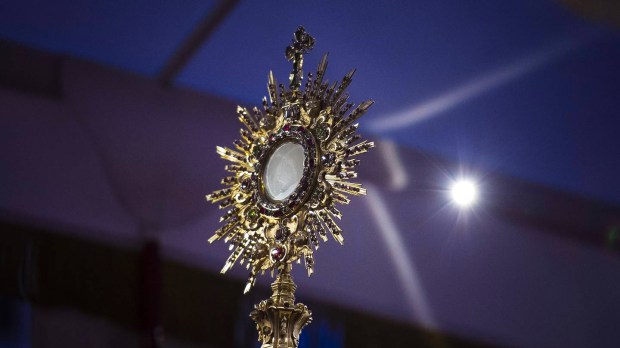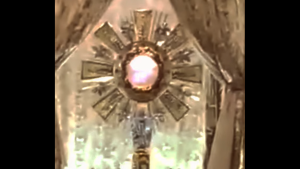The Polish Embassy to the Holy See has examined one of the most inexplicable phenomena in history.
Do you know precisely what a Eucharistic miracle is? Do you know how many there have been in the history of the Church and what it means? These are the questions that the Polish Embassy to the Holy See in Rome sought to answer through an unprecedented exhibition.
At the Polish church of St. Stanislaus in Rome, the Polish Embassy inaugurated several years ago an exhibition dedicated to Eucharistic miracles around the world. It presented an overview of all the Eucharistic miracles recorded throughout the history of the Church. The display is complemented by scientific explanations.
Read more…“‘Computer geek’ takes one more step toward sainthood”
According to scholars, the first Eucharistic miracle recognized by the Catholic Church occurred in Lanciano (Italy), in about the year 700. This miracle happened when a monk, who had doubts about the Real Presence of Jesus in the Eucharist, saw the wine in the chalice turn into blood and the bread turn into flesh. Recently, after examining the relics still in existence, researchers concluded that they were indeed made of human tissue. Since this first miracle, 134 others of the same type have been recognized by the Church.
Stolen, thrown, abandoned or forgotten
In his research, Dr. Pawel Skibinski, director of the John Paul II Museum in Warsaw, noted that in the majority of cases these miracles occur in a similar context: either the celebrant had doubts about the Real Presence (Bolsena, Italy), or the offerings were mistreated (stolen, thrown away, abandoned or forgotten). This was the case in Buenos Aires (Argentina) in 1996, when then-Bishop Jorge Bergoglio (now Pope Francis) was an auxiliary bishop there: a consecrated host was found on the ground. Days later, it had turned into bloody flesh.
More recently, in 2014, Father Andrzej Ziombra witnessed a Eucharistic miracle in his church in Legnica (Poland). On Christmas Day, the priest placed a host that had fallen on the ground into a glass of water. After some time, the host began turning red, as if it were bleeding.
He then warned the bishop, who asked for an analysis, primarily mycological. The results led the scientists to conclude that it was not mold but a piece of human flesh.
State of agony
As in most cases, explains the priest, the scientists succeeded in proving the existence of a sample of heart muscle. The investigation of the Eucharistic miracles also revealed the state of agony of the pieces of flesh: that is to say that the human tissue had not undergone necrosis but remained at an intermediate stage between life and decomposition.
Another phenomenon observed in all these cases: The appearance of bread and wine remains, even as the substance of flesh is scientifically identified. This is in keeping with our understanding of transubstantiation: that the consecrated elements become the Body and Blood of Christ without losing the appearance and other sensory qualities of bread and wine. Finally, the sample does not seem to decompose, even after centuries. Thus, in Bolsena for example, the blood stains on the marble are still visible, as if being impossible to clean off.
Although flesh and blood are not always visible in the Eucharist, concludes Father Ziombra, the presence of the Body of Christ is none the less certain in the eyes of faith. “This is what these miracles have reminded us of since 1300,” says the prelate: “The miracle continues every day on the altars of all the churches in the world.”


